 |
Home | Charity | Feedback |
Taiwan:
Alishan National Park,
Kaohsiung,
Sun Moon Lake,
Tainan,
Taipei,
Taitung,
Taroko National Park,
Yehliu Geo Park
Taroko National Park, Taiwan: One of the 9 gems by Prakash Bang, Editor in Chief 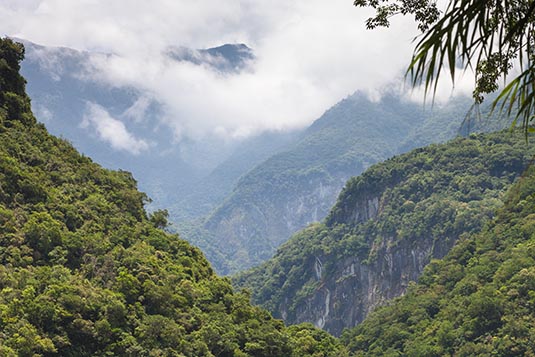 Taroko National Park is one of the nine national parks in Taiwan and was named after the Taroko Gorge, the landmark gorge of the park carved by the Liwu River. The park was originally established as the Tsugitaka-Taroko National Park by the Governor-General of Taiwan on 12 December 1937 when Taiwan was part of the Empire of Japan. After the Empire of Japan's defeat in World War II, the Republic of China took over Taiwan in consequence. The ROC government subsequently abolished the park on 15 August 1945. It was not until 28 November 1986 that the park was reestablished. 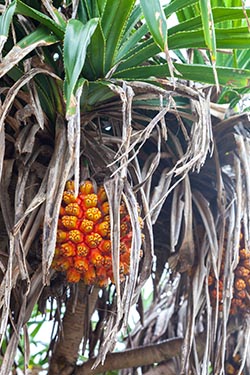 After making merry with the local tribe, we commenced our journey towards Hualien. In about 40 minutes we were at a beautiful park on the shores of the Pacific Ocean. The location made for a beautiful photo stop. A 30-minute walk along the coast, built up our energy for the next one hour to Sanxiantai, the location of lava rocks, pebble beach and the famous Foot Bridge.
After making merry with the local tribe, we commenced our journey towards Hualien. In about 40 minutes we were at a beautiful park on the shores of the Pacific Ocean. The location made for a beautiful photo stop. A 30-minute walk along the coast, built up our energy for the next one hour to Sanxiantai, the location of lava rocks, pebble beach and the famous Foot Bridge.
Of course, prior to reaching the rocks, a stop was a must at a restaurant selling Taiwan's famous bao. Long queues at the counter was a proof of the popularity of the store. Dozens and dozens of freshly made bao were being churned out, with dozens of different fillings. They were finishing as they came out fresh! Sanxiantai is located in the north of Chenggong Township in Taitung County. It is composed of offshore islands and coral reefs. Odd-shaped rock are everywhere on the islands, including three huge rocks which have spawned legends about three Chinese saints: Lyu-Dongbin, Li-Tieguai and He-Xiangu. They once boarded on the island, hence the name Three Saints Island. 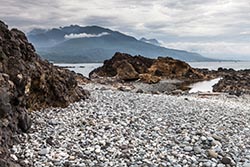 Sanxiantai is a geological rock that turned out to be a headland. Gradual erosion cut the neck that connected the mainland to the main island thus became the offshore islands.
Sanxiantai is a geological rock that turned out to be a headland. Gradual erosion cut the neck that connected the mainland to the main island thus became the offshore islands.
We spent an hour on the Pebble Beach, exploring the rocks around and also walked half the length of the Arch Bridge. It was time to hit the road again. Soon we reached the Tropic of Cancer marker. And sure enough, we completed the ritual of a picture at the monument. We then reached the city of Hualien. The only stop we made was on a hill that housed the former military site known as Pine Garden. The monument had an interesting story; the Japanese air force pilots, the suicide bombers, were hosted to a dinner with high ranking military officials the night before their mission. It was called the 'last dinner' as it was well-known that those pilots would never be seen again! 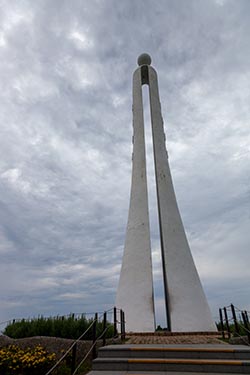 After leaving the city of Hualien, began our mountain drive towards Taroko National Park. A part of the Taroko Gorge is composed of marble cliff faces covered with small holes, the result of long-term erosion by river and ground water. House swifts and Pacific swallows often forage and nest here, giving the place its name - the Swallow Grotto.
After leaving the city of Hualien, began our mountain drive towards Taroko National Park. A part of the Taroko Gorge is composed of marble cliff faces covered with small holes, the result of long-term erosion by river and ground water. House swifts and Pacific swallows often forage and nest here, giving the place its name - the Swallow Grotto.
Along the edge of the road a boardwalk presents an opportunity to view the gorge and the gushing river below. We walked along the road for about 15 minutes. The car waited for us at the end of the walk. It was quite a scenic drive, but it was getting dark so it was best to savour the view on our return journey the next morning. That night we stayed at the 5-star Silks Palace Hotel bang in the middle of the national park and far, far away from humanity. Post breakfast the next morning we commenced our decent and our drive to Yehliu. 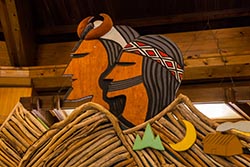 Our first stop of the day was at Taroko Village Hotel. The manager of the property was kind enough to show us around and give us a brief about the tribal life. Murals, paintings and photographs gave us quite an insight. For most of the tribes in Taiwan, wild boar is a staple diet. They still hunt in the forests for their dinner. I am told that hunting is banned, but the tribes have their way.
Our first stop of the day was at Taroko Village Hotel. The manager of the property was kind enough to show us around and give us a brief about the tribal life. Murals, paintings and photographs gave us quite an insight. For most of the tribes in Taiwan, wild boar is a staple diet. They still hunt in the forests for their dinner. I am told that hunting is banned, but the tribes have their way.
Our next stop was at the picturesque Eternal Spring Shrine. As the name suggests, fresh water spring flows down from the shrine to join the river below. The shrine is a 20-minute walk from the road and is well worth the trek. Taroko National Park Image Gallery  Photo viewer Photo viewer
|
|
|
Home |
Charity |
Feedback
Privacy Policy | Terms of Usage © YoGoYo.com. All rights reserved. |





























